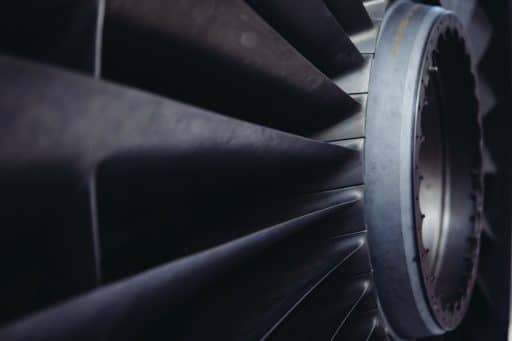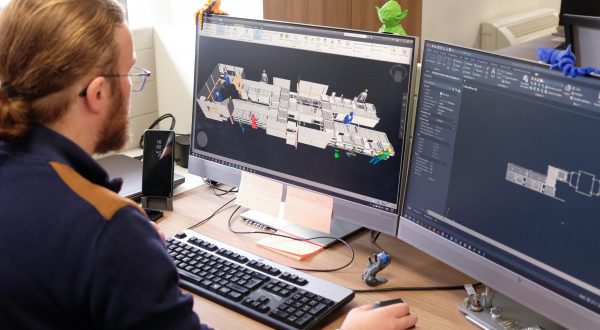How robotics are helping to speed up non-destructive testing procedures
Reading time: 4 min
A major engine manufacturer in the aeronautics sector has introduced an automated solution for inspecting one of its engine structural parts. This performance-enhancing tool delivers a competitive edge in a growing market.

Following the development of its new aircraft engine, a major player in the aeronautics industry needed to inspect one of its parts by using x-ray imaging, a non-destructive testing (NDT) technique. NDT covers various inspection methods that ensure the integrity of parts, components, materials, and structures, without damaging them. X-ray imaging helps detect manufacturing defects. The process can be cumbersome, and involves manually placing silver halide x-ray films around the part, radiographing it, developing the films in a darkroom, classifying the images, and so on.
A new solution, developed by two Actemium business units (VINCI Energies), automates the radiographic testing process, thus significantly reducing inspection times. This represents a considerable advantage given the growth in the aeronautics sector and the increase in production rates. Actemium NDT Products & Systems contributed its expertise in non-destructive testing, while Actemium Toulouse Robotique et Automation added its know-how in automation.
With Actemium’s solution, “two robots work collaboratively to inspect the part at two stages of the manufacturing process, before and after machining,” explains Olivier Martin, project manager at Actemium Toulouse Robotique et Automation. “One of the robots carries the x-ray source and the other a flat panel, an acquisition screen that makes it possible to display the images in real time on a computer,” he adds.
“The entire cycle is automated, and the images are then transferred for operator approval, which not only increases the reliability of the process but also speeds it up.”
This digital radiography system helps limit errors relating to the positioning and development of the silver halide film, since these stages have been removed. “Once the part number has been scanned, an automatic cycle is launched to inspect the whole part,” says Jérémy Fuentes, x-ray product manager at Actemium NDT Products & Systems. “The placing of the robot is determined by a part-specific programme, which ensures greater positioning and inspection accuracy. The entire cycle is automated, and the images are then transferred for operator approval, which not only increases the reliability of the process but also speeds it up.”
Greater flexibility and speed
Relieved of their handling tasks, operators have fewer movements to make and no longer go into the x-ray enclosure, thereby reducing service time. They are able to spend more time analysing the information obtained via the digital imaging software. The solution improves repeatability and accuracy in terms of defect detection, and offers shorter cycle times. But it’s not just about automating the process to enhance repeatability and speed. “This method delivers significant added value over the more conventional handling system since we use it to achieve higher quality parts,” explains Olivier Martin.
The automated solution as a whole is designed to be flexible and scalable. The imaging software, developed by Actemium NDT – P&S in partnership with the client, specifically addresses the client’s needs and can be adjusted as needs change. This flexibility helps deliver a faster return on investment since it is calculated on the basis of several applications instead of one.
15/01/2018


